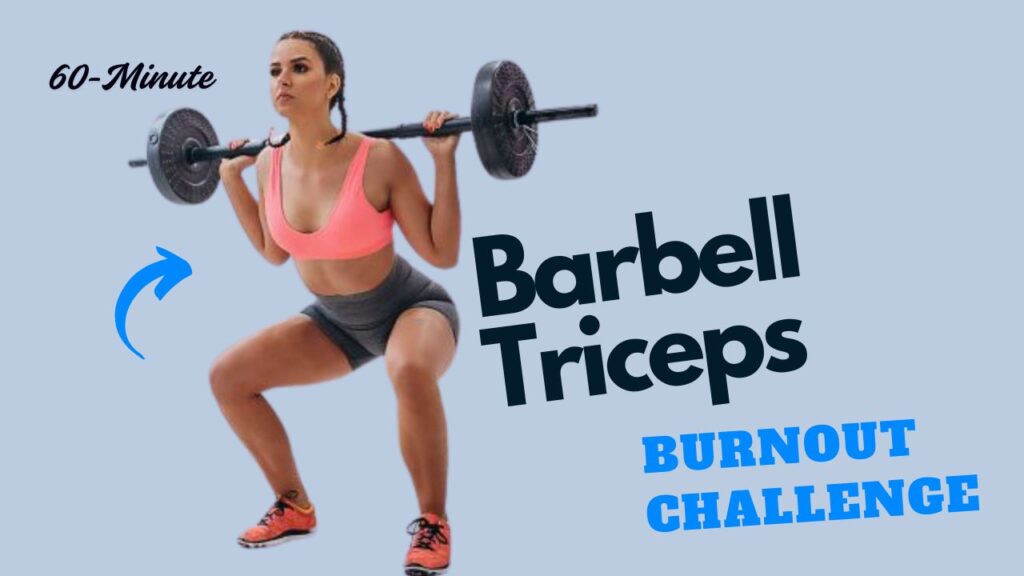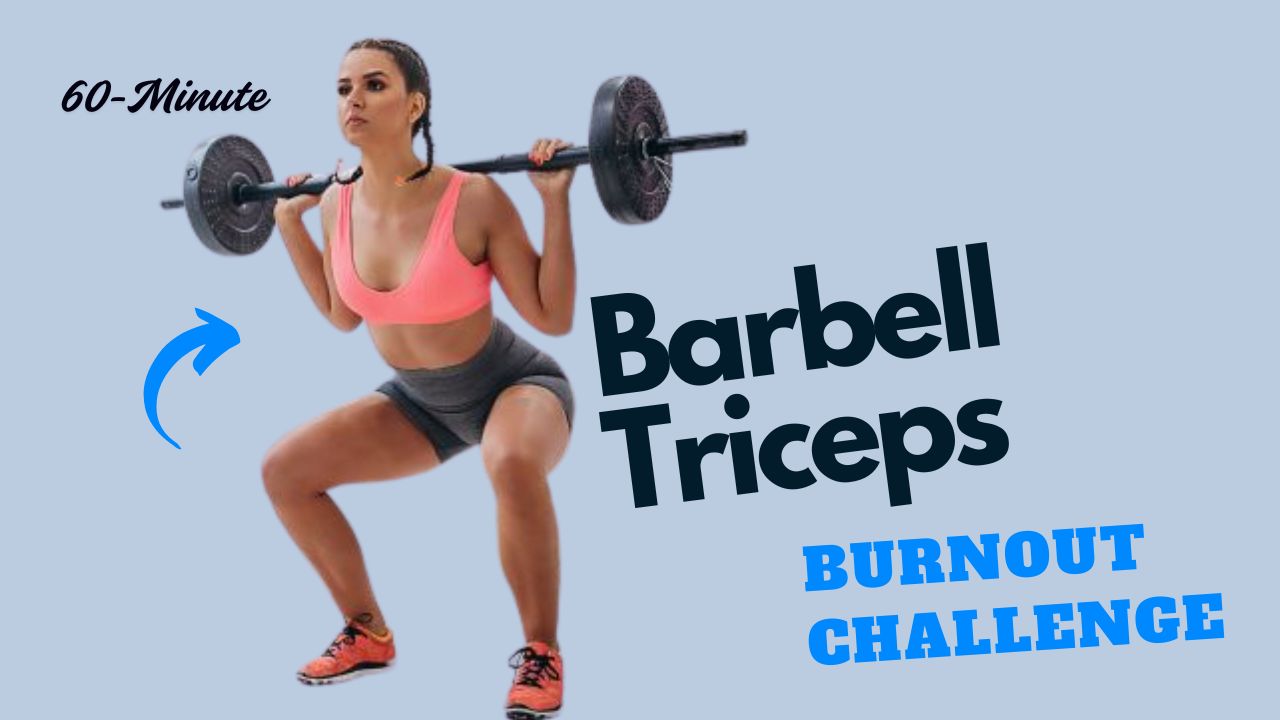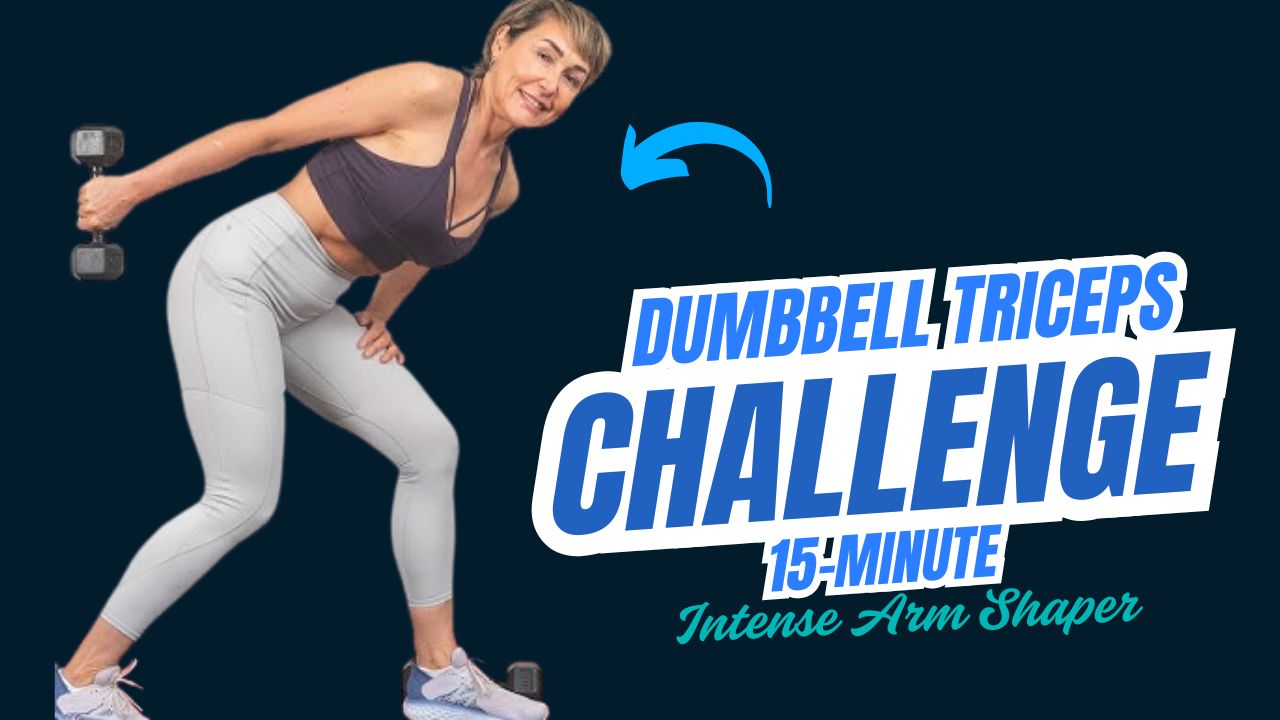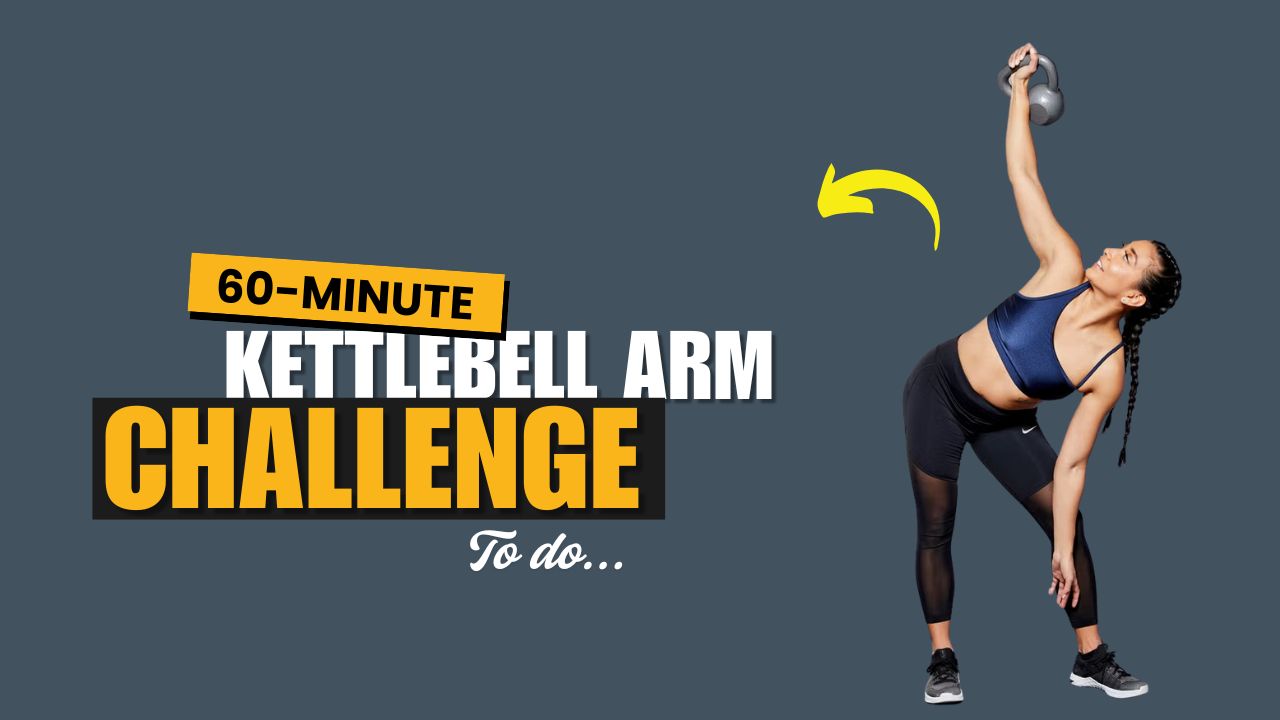When most people think of building bigger arms, the biceps usually get all the attention. But here’s the truth: your triceps make up nearly two-thirds of your upper arm mass.
That means if you want thicker, stronger, and more impressive arms, focusing on your triceps is non-negotiable.
This 60-minute barbell triceps burnout workout is designed to torch your triceps with compound lifts, targeted isolation movements, and high-volume strategies that push your muscles to their limits. Whether you’re chasing strength, size, or definition, this workout will leave your arms pumped and growing.
Did you know? The triceps are made up of three heads—the long head, the lateral head, and the medial head. To achieve balanced growth, your training must hit all three. That’s exactly what this program is built for.

Table of Contents
Why Train Triceps with Barbells?
Barbells provide maximum loading potential, allowing you to lift heavier than dumbbells or cables.
Heavier loads mean greater mechanical tension, one of the primary drivers of muscle growth. Additionally, barbells keep your arms in a fixed plane, making it easier to progressively overload your triceps over time.
Another advantage? Barbell triceps exercises recruit stabilizing muscles in your shoulders and chest, giving you a more complete upper-body workout.
Common Myths About Triceps Training
- Myth 1: Close-grip bench press is just a chest exercise.
Wrong. While it does involve the chest, shifting your grip closer emphasizes the triceps, making it one of the best mass-builders for arm size. - Myth 2: You only need pushdowns for triceps growth.
Triceps require heavy compound lifts and isolation moves. Pushdowns alone won’t build serious mass. - Myth 3: Training triceps once a week is enough.
For many lifters, hitting triceps twice a week with smart programming leads to better hypertrophy.
What Can Happen After 30 Days of This Workout
| Positive Changes (Benefits) | Possible Challenges (Things to Watch) |
|---|---|
| Noticeable increase in triceps strength and pressing power. | Muscle soreness may still occur, especially after heavier sessions. |
| Arms start looking fuller and more defined due to triceps growth. | If recovery (sleep, nutrition) is poor, progress may stall. |
| Improved mind-muscle connection with barbell movements. | Risk of elbow or wrist discomfort if form is compromised. |
| Better endurance and ability to handle higher workout volumes. | Overtraining may occur if paired with too many other pushing workouts. |
| Stronger lockout strength for chest and overhead presses. | Without progressive overload, muscle growth could plateau. |
| Increased confidence in lifting heavier weights safely. | Neglecting other muscle groups may create imbalance. |
Do’s and Don’ts for the 60-Minute Barbell Triceps Burnout
| Do’s | Don’ts |
|---|---|
| Warm up with light barbell presses or bodyweight dips before starting. | Don’t jump straight into heavy lifting without warming up. |
| Keep elbows tucked close to your body during pressing movements. | Don’t flare your elbows excessively—it reduces triceps activation and risks injury. |
| Use a controlled tempo: slow on the way down, explosive on the way up. | Don’t let momentum or bouncing do the work for you. |
| Start with moderate weights and gradually increase load (progressive overload). | Don’t ego lift with poor form—it increases injury risk. |
| Focus on full range of motion to maximize muscle activation. | Don’t cut the movement short just to move heavier weight. |
| Rest 45–90 seconds between sets depending on exercise intensity. | Don’t rush through sets without enough recovery. |
| Prioritize compound barbell moves first, then isolation exercises. | Don’t exhaust your arms on isolation moves before heavy lifts. |
| Stay consistent with the program for at least 4–6 weeks. | Don’t switch routines every week—you won’t track progress properly. |
The Barbell Triceps Burnout Exercises
Below are the core exercises that make up the 60-minute challenge. Each includes a brief description, followed by step-by-step how-to instructions.
1. Close-Grip Barbell Bench Press
Description: This is the king of barbell triceps exercises. By narrowing your grip, you reduce chest activation and shift the workload to your triceps.
How to Do It:
- Lie flat on a bench, feet planted firmly on the floor.
- Grip the barbell slightly narrower than shoulder-width apart.
- Unrack the bar and hold it above your chest with arms fully extended.
- Lower the bar slowly to the middle of your chest, keeping elbows tucked.
- Press the bar back up to the starting position, squeezing the triceps at the top.
Tip: Don’t grip too close; it can strain your wrists.
2. Barbell Skull Crushers (Lying Triceps Extensions)
Description: A staple isolation exercise that directly targets the long head of the triceps.
How to Do It:
- Lie on a flat bench holding a barbell with an overhand grip.
- Extend arms straight above your chest.
- Keeping upper arms fixed, bend elbows and lower the bar towards your forehead.
- Pause briefly, then press back to the starting position.
Tip: Keep the bar under control to avoid elbow stress.
3. JM Press
Description: A hybrid between a close-grip bench press and skull crusher, this move hits the triceps with mechanical tension and stretch.
How to Do It:
- Lie flat on a bench holding a barbell with a narrow grip.
- Lower the bar toward your chin by bending elbows and slightly moving them forward.
- Stop just above your chin, then press back up.
Tip: Think of it as lowering the bar halfway between a bench press and skull crusher.
4. Overhead Barbell Triceps Extension
Description: Targets the long head of the triceps by stretching it under load.
How to Do It:
- Sit upright on a bench with back support.
- Grip a barbell and raise it overhead with arms fully extended.
- Bend elbows to slowly lower the bar behind your head.
- Extend arms back to the top.
Tip: Keep elbows close to your head to maximize triceps engagement.
5. Barbell Close-Grip Floor Press
Description: Limits chest activation while protecting shoulders, making it excellent for triceps strength.
How to Do It:
- Lie flat on the floor holding a barbell with a narrow grip.
- Press the bar above your chest.
- Lower the bar until your triceps touch the floor.
- Drive back up to full extension.
Tip: Great for lifters with shoulder issues compared to the bench press.
6. Barbell Reverse-Grip Press
Description: This variation puts extra emphasis on the medial head of the triceps.
How to Do It:
- Lie on a flat bench holding the barbell with an underhand (supinated) grip.
- Lower the bar to your lower chest with elbows tucked in.
- Press upward until arms are fully extended.
Tip: Start with lighter weights until you master the grip.
7. Barbell Tate Press
Description: A lesser-known but highly effective isolation exercise for building triceps thickness.
How to Do It:
- Lie on a flat bench holding a barbell with arms extended.
- Lower the bar outward toward your chest by flaring elbows.
- Push the bar back to the starting position.
Tip: Control the movement—avoid letting the bar drop too quickly.
8. Barbell Diamond Press
Description: Similar to the close-grip press but with hands positioned in a diamond shape on the bar, increasing triceps activation.
How to Do It:
- Lie on a bench holding the barbell with hands close together (thumbs and index fingers forming a diamond).
- Lower the bar slowly to your chest.
- Press the bar back up with a strong triceps squeeze.
Tip: Keep wrists straight to prevent discomfort.
Do You Know?
The triceps’ long head not only extends the elbow but also assists shoulder extension. That’s why overhead movements like the barbell extension are crucial for maximum growth.
The 60-Minute Barbell Triceps Burnout Challenge
This workout is designed to last around 60 minutes, pushing your triceps through strength and hypertrophy zones. Perform with strict form and moderate-to-heavy weight.
| Exercise | Sets | Reps | Rest | Notes |
|---|---|---|---|---|
| Close-Grip Barbell Bench Press | 4 | 8–10 | 90 sec | Focus on heavy loading |
| Barbell Skull Crushers | 3 | 10–12 | 60 sec | Controlled movement |
| JM Press | 3 | 8–10 | 75 sec | Keep bar path consistent |
| Overhead Barbell Triceps Extension | 3 | 10–12 | 60 sec | Full stretch at bottom |
| Close-Grip Floor Press | 3 | 8–10 | 75 sec | Pause at the floor |
| Barbell Reverse-Grip Press | 2 | 12–15 | 45 sec | Use lighter weight for form control |
| Barbell Tate Press | 2 | 12–15 | 45 sec | Isolation, slow eccentric |
| Barbell Diamond Press | 2 | 10–12 | 60 sec | Strong lockout squeeze |
Total Time: ~60 minutes
Post-Workout Tips for Maximum Growth
- Progressive Overload: Track your weights weekly to ensure gradual strength increases.
- Recovery: Aim for 48 hours before hitting triceps again to avoid overtraining.
- Nutrition: Fuel your recovery with protein-rich meals to support muscle growth.
- Form Over Ego: Heavy weight with sloppy form won’t build arms—it risks injury.
Conclusion
The 60-Minute Barbell Triceps Burnout is more than just a workout—it’s a challenge designed to push your arms past their comfort zone and trigger real growth.
By combining heavy compound lifts with focused isolation exercises, you’re targeting all three heads of the triceps for balanced development.
The key lies in consistency, form, and progressive overload. Stick with this program, and in just a few weeks, you’ll notice not only stronger triceps but also bigger, more defined arms that command attention.
Challenge Continuation Idea
Once you’ve completed this workout consistently for 4–6 weeks, don’t stop—level it up. Here’s how you can continue the challenge:
- Week 5–6: Increase the weight by 5–10% on your main compound moves (close-grip bench press, floor press).
- Week 7–8: Add one extra set to each exercise to push volume higher.
- Week 9 onward: Start incorporating supersets (e.g., Skull Crushers + Overhead Extensions) for maximum pump and time efficiency.
Think of this not as a one-time workout but as a progressive triceps-building journey. The more you challenge your arms, the more they’ll grow—turning this 60-minute burnout into a long-term strategy for unstoppable arm gains.
Frequently Asked Questions (FAQs)
Can beginners do this 60-minute triceps burnout workout?
Yes, beginners can try this workout, but it’s best to start with lighter weights and fewer sets (around 2 per exercise) until you build strength and proper form.
How often should I do this triceps workout?
Aim for 1–2 times per week, depending on your overall training split. Avoid training triceps on consecutive days to allow for proper recovery.
Do I need to use only a barbell for triceps growth?
No. While barbells are excellent for progressive overload, combining them with dumbbells, cables, or bodyweight movements can provide variety and reduce plateaus.
Will this workout also build chest and shoulders?
Yes, some compound barbell movements (like the close-grip bench press) recruit chest and shoulders, but the primary focus remains on the triceps.
How long before I see results?
With proper nutrition and consistency, you can expect noticeable strength gains in 4–6 weeks and visible arm growth within 8–12 weeks.
Can I shorten the workout if I’m short on time?
Yes. Focus on the top three moves: Close-Grip Bench Press, Skull Crushers, and Overhead Extensions. These hit all three triceps heads effectively in less time.
Do triceps respond better to heavy weight or higher reps?
Both. Heavy weights (6–8 reps) build strength, while moderate weights with higher reps (10–15) increase muscle size and endurance. A mix of both, as in this program, works best.
Is this workout safe for people with elbow pain?
If you have existing elbow issues, avoid exercises like skull crushers until cleared by a professional. Opt for controlled pressing movements (e.g., floor press) to reduce joint strain.
Should I warm up before starting?
Absolutely. Spend at least 5–10 minutes warming up with dynamic stretches or light pressing movements to protect your joints and improve performance.
Can I combine this with a biceps workout on the same day?
Yes, pairing triceps and biceps in the same session can be highly effective, as they’re opposing muscle groups. Just make sure to manage your total volume and recovery.










